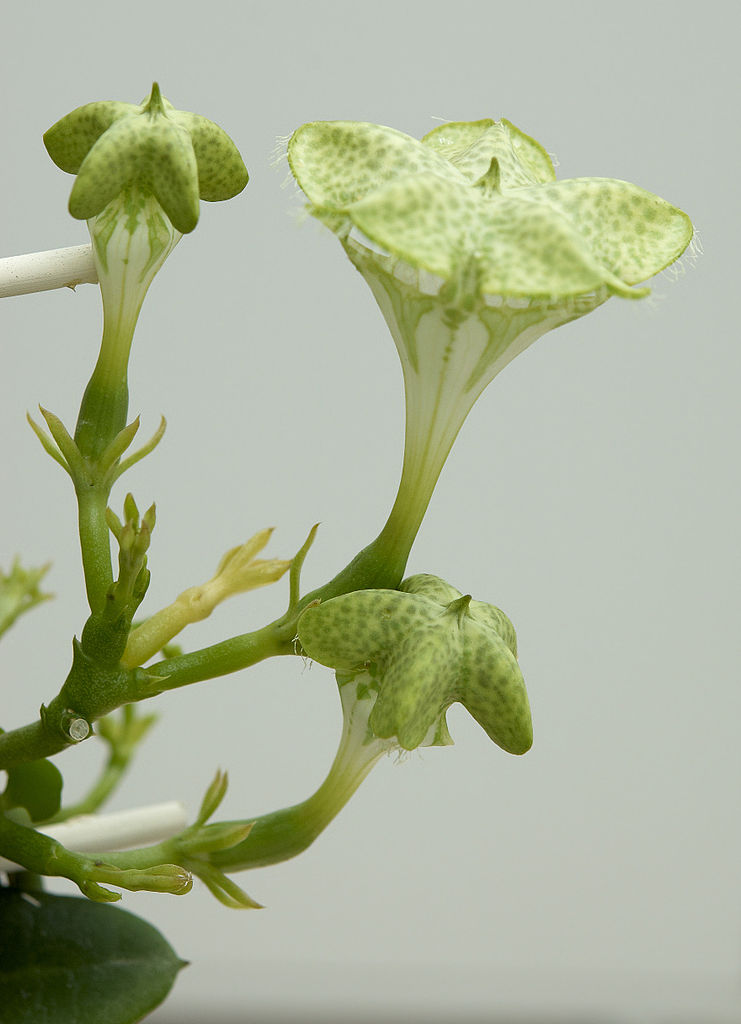

Family: Apocynaceae Resized image from Wikimedia Commons: Wouter Hagens, Ceropegia sandersonii A, CC BY-SA 3.0
The common name of this small succulent vine refers to its flowers that are shaped somewhat like parachutes or umbrellas. The flowers are even more unusual in that they give off a scent to trap flies. As the flies slide down the flower tube to the base they get covered in pollen. The flies are released later, as the flower withers, to pollinate other parachute flowers. It's fairly easy to grow as a basket plant or in a dry terrarium in well-drained soil and bright light (not direct sunlight). Native to Mozambique, South Africa, and Swaziland. (B,T)
|

Keyed Cultural Guide: The following symbols are listed with many product descriptions. If so, they indicate special characteristics or growing requirements. Also, see "Cultural Information".
(B) Hanging
basket
(D) Dwarf
under 12"
(F) Flourescent lights for
indoor light culture
(H) Humid
conditions
(M) Miniature
under 6"
(T) Terrarium
plant
(W) Winter
flowering
Key to USDA Hardiness Zones
|




